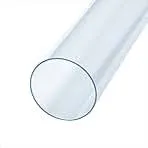Aug . 18, 2024 04:40 Back to list
Exploring the Benefits and Applications of HDPE Panels in Various Industries
The Versatility of HDPE Panels A Comprehensive Overview
High-Density Polyethylene (HDPE) panels have gained significant popularity in various industries due to their unique properties and applications. As a modern material, HDPE is not only durable and strong but also lightweight, resistant to impact, and impervious to moisture and chemicals. This combination of characteristics makes HDPE panels an ideal choice for a wide range of uses, from construction to manufacturing and even environmental applications.
What is HDPE?
HDPE is a thermoplastic polymer made from petroleum. It is characterized by its high strength-to-density ratio, which contributes to its robustness and longevity. The material is formed through the polymerization of ethylene, which results in long chains of molecules that provide exceptional toughness. Unlike other plastics, HDPE displays remarkable resistance to a variety of environmental stressors, making it suitable for both indoor and outdoor applications.
Applications of HDPE Panels
One of the most common applications of HDPE panels is in the construction industry. They are increasingly used for building facades, roofing, and interior walls due to their lightweight nature and resistance to water. HDPE panels are often employed in the construction of modular buildings, where they provide structural integrity without the added weight of traditional materials. Additionally, their insulation properties contribute to energy efficiency in buildings, making them an environmentally friendly choice.
In the agricultural sector, HDPE panels serve as effective barriers and dividers in livestock facilities. They are easy to clean and maintain, which is essential for maintaining hygiene in barns and stables. Furthermore, HDPE's resistance to chemicals and moisture makes it a popular choice for creating storage containers and tanks for farming operations.
Another notable application of HDPE panels is in the signage and display industry. Their ability to be easily cut, shaped, and printed on makes them ideal for creating durable and visually appealing signs. Whether for commercial advertisements or informational displays, HDPE signage can withstand harsh weather conditions without fading or deteriorating, providing longevity and value for businesses.
hdpe panel

Advantages of HDPE Panels
The benefits of HDPE panels extend beyond their versatility and durability. One of the most significant advantages is their environmental impact. HDPE is fully recyclable, encouraging sustainable practices and reducing waste in landfills. Many manufacturers use recycled HDPE in their products, contributing to a circular economy and diminishing the reliance on virgin materials.
Additionally, HDPE panels are non-toxic and safe for direct contact with food, making them suitable for packaging applications in the food industry. Their chemical resistance ensures that they do not leach harmful substances into food items, providing peace of mind for consumers and manufacturers alike.
Challenges and Considerations
Despite their many advantages, there are some challenges to consider when using HDPE panels. They can be more expensive than other materials like plywood or particle board. However, the long lifespan and low maintenance requirements often justify the initial investment. Furthermore, while HDPE is highly resistant to many chemicals, it is crucial to verify compatibility with specific substances to avoid degradation.
Conclusion
In summary, HDPE panels represent a remarkable advancement in material technology. Their versatility makes them suitable for a multitude of applications across various industries. From construction and agriculture to signage and environmental solutions, HDPE panels offer a combination of durability, sustainability, and performance that is hard to beat. As the demand for eco-friendly materials continues to rise, the relevance and importance of HDPE panels will only increase, making them a vital component of modern industrial practices.
-
HDPE Pipe Fittings: Durable, Leak-Proof Solutions
NewsAug.16,2025
-
Premium CPVC Sheet: High-Temp & Chemical Resistant Solutions
NewsAug.15,2025
-
Durable PPR Pipe for Hot & Cold Water Systems - Easy Install
NewsAug.14,2025
-
Durable HDPE Sheet | Versatile & Impact-Resistant Plastic
NewsAug.13,2025
-
Premium PVC Soft Sheets: Clear, Flexible & Durable
NewsAug.12,2025
-
Premium PVC Round Rods: Durable, Chemical Resistant, Easy to Machine
NewsAug.11,2025

